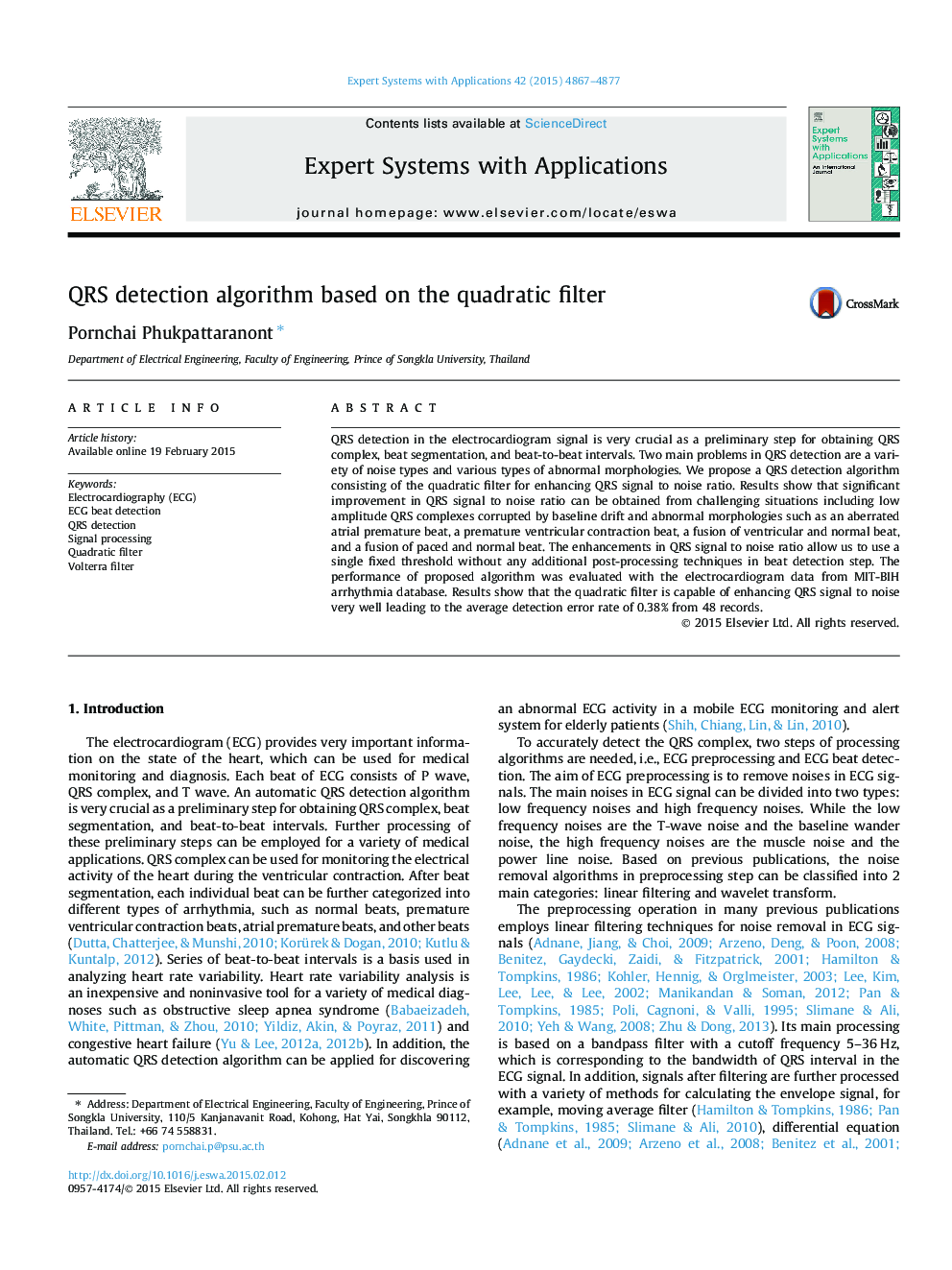| Article ID | Journal | Published Year | Pages | File Type |
|---|---|---|---|---|
| 382780 | Expert Systems with Applications | 2015 | 11 Pages |
•QRS detection algorithm with noise removal method based on the quadratic filter.•Results show the significant improvement in QRS signal to noise ratio.•Use only a single fixed threshold without additional post processing techniques.•Evaluate the algorithm with 109,483 beats of QRS complexes from MIT-BIH database.•Achieve overall sensitivity 99.82% and positive predictive rate 99.81%.
QRS detection in the electrocardiogram signal is very crucial as a preliminary step for obtaining QRS complex, beat segmentation, and beat-to-beat intervals. Two main problems in QRS detection are a variety of noise types and various types of abnormal morphologies. We propose a QRS detection algorithm consisting of the quadratic filter for enhancing QRS signal to noise ratio. Results show that significant improvement in QRS signal to noise ratio can be obtained from challenging situations including low amplitude QRS complexes corrupted by baseline drift and abnormal morphologies such as an aberrated atrial premature beat, a premature ventricular contraction beat, a fusion of ventricular and normal beat, and a fusion of paced and normal beat. The enhancements in QRS signal to noise ratio allow us to use a single fixed threshold without any additional post-processing techniques in beat detection step. The performance of proposed algorithm was evaluated with the electrocardiogram data from MIT-BIH arrhythmia database. Results show that the quadratic filter is capable of enhancing QRS signal to noise very well leading to the average detection error rate of 0.38% from 48 records.
